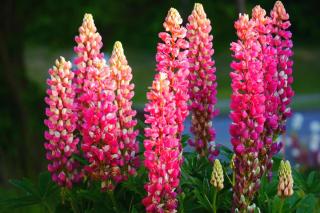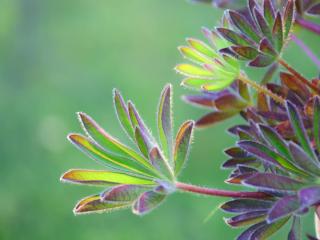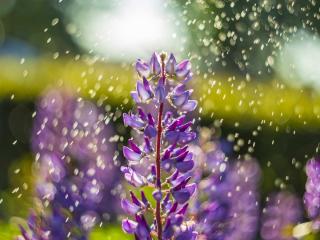

Lupine is a beautiful perennial that offers abundant and generous blooming.
Essential facts about lupine
Name – Lupinus
Family – Fabaceae
Type – perennial
Height – 24→48 in (60→120 cm)
Exposure – full sun, part sun
Soil: not limestone – Flowering: spring-summer
Thanks to the range of colors that lupines are available in, you’ll be doting your flower beds with a beautiful designer-like touch.
→ Good read mentioning lupine: Blue in the garden

Lupine hates being moved around: select the spot with care so you won’t need to transplant it.
Of course, lupine seeds will spread and sprout on their own. But if you want to control the propagation, clump division is the way to go.

Lupines are easy to grow, but they do have a few requirements, especially in summer. Indeed, the soil must remain cool and so you’ll have to spread mulch at the foot of your plants to retain moisture and ensure a certain level of coolness.
Lupine is famous for resisting disease, and its hardiness is near unparalleled. It can cope with temperatures as low as -13°F (25°C)!

Once the floral scapes have wilted away, cut the stem as short as you can to trigger a second round of blooming in fall.
In winter, cut away dried leaves and wilted flowers. No need for extra winter mulch because lupine can cope with freezing very well.
With a bearing of closely-set bunches that grow 20 to 24 inches (50 to 60 cm) tall, this plant is very well suited to flower beds and wild gardens.
The blooming comes in abundant swaths of color, and will definitely add a touch of luxurious color to your garden, especially in flower beds and along edges.
Lupines, incidentally, are also perfect for preparing cut flower bouquets, simply cut the floral scape at the foot of the stem.
Lupines have been bred and grown for over 4000 years, mostly for their seeds which contain a lot of protein: they were used as winter fodder for animals. But you must be very careful because many species are actually poisonous and must not be ingested, neither by animals nor by us!
Lupine tends to propagate on its one once planted and settled in; cutting a few bunches to prepare bouquets won’t compromise your plant in the least!